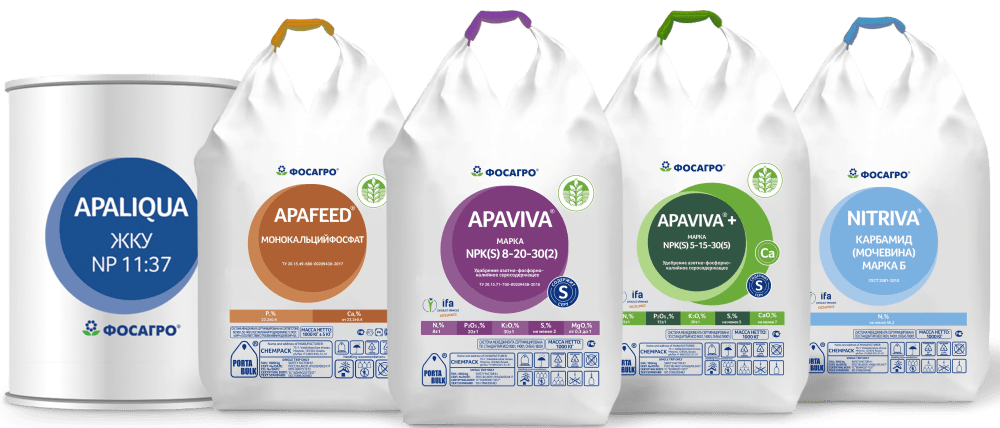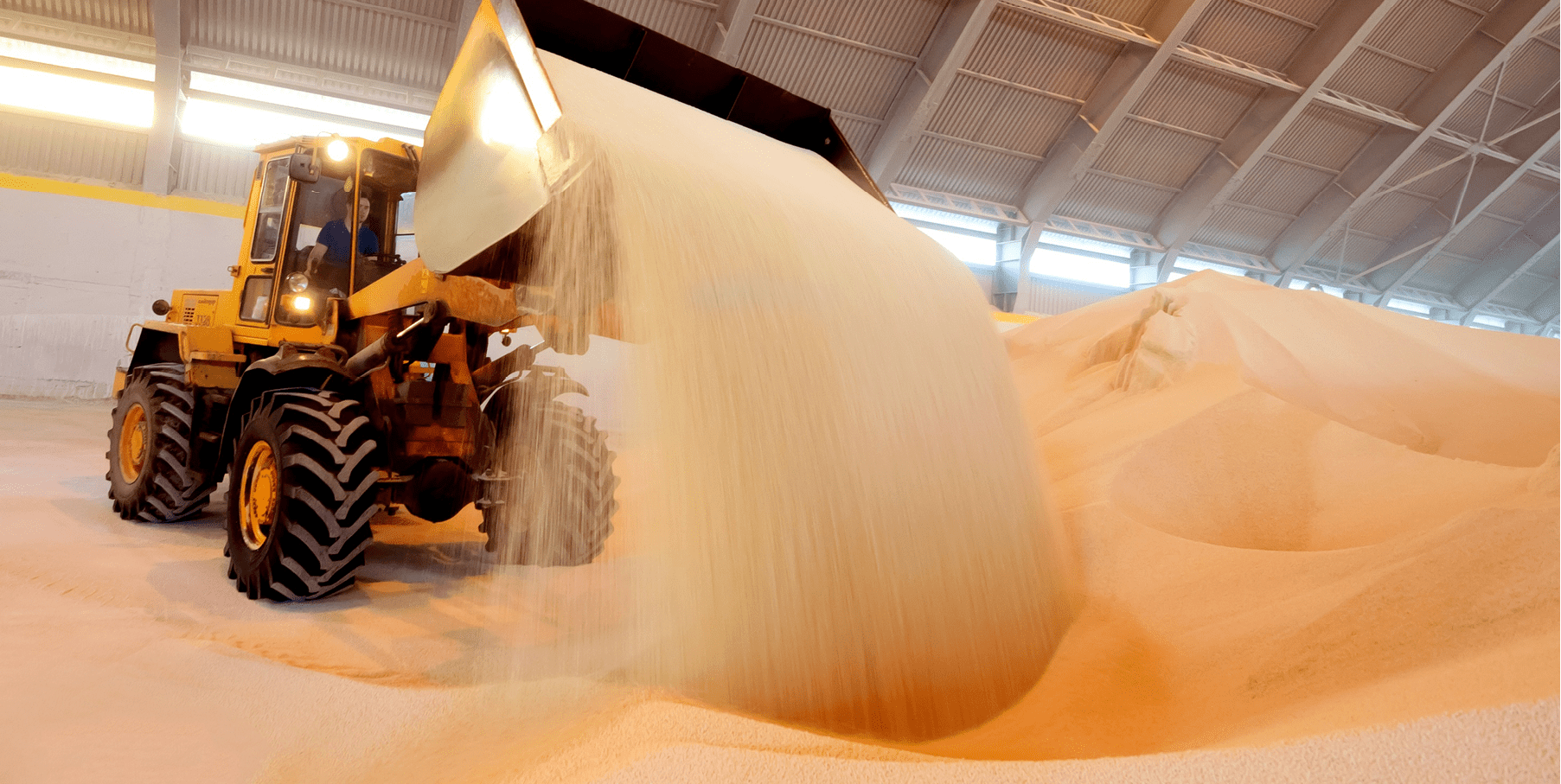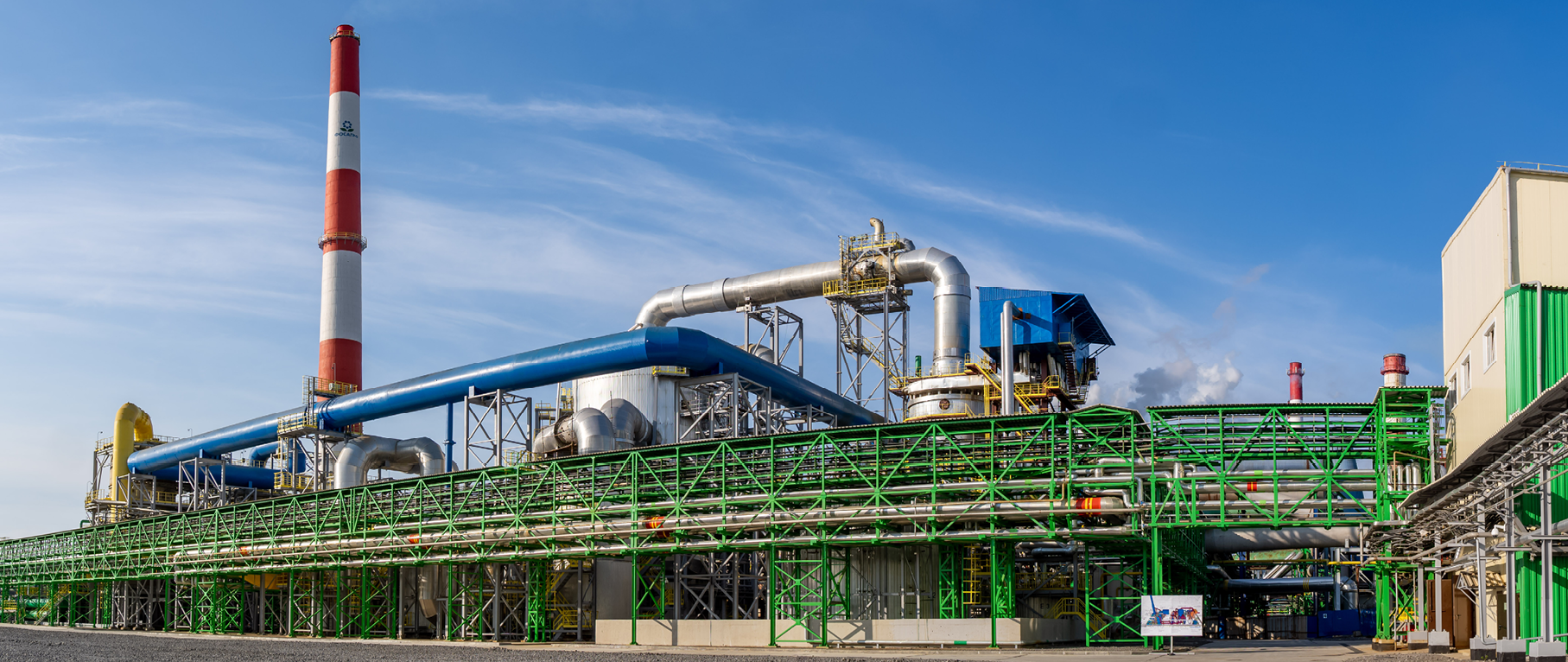Operational performance

Speaking about PhosAgro’s operating results, I would like to point out the favourable market conditions throughout the year. Robust demand and high affordability of fertilizers, coupled with limited global phosphate production, laid grounds for a 5% y-o-y sales growth for this type of product. We greatly benefitted from our consistent investments in production over the previous years.
The Kirovsk branch of Apatit reached stable annual production of more than 10.5 mln t of apatite concentrate. The Cherepovets site increased its output by almost 5%. The Balakovo branch launched the production of granulated ammonium sulphate, a product new for the Company and unique for the Russian market. The Volkhov branch of Apatit is undergoing a global transformation, PhosAgro’s largest investment project to date, worth about RUB 28 bln.
As a result of higher output and larger share of higher-margin complex fertilizers, we were able to solidify our leadership on the Russian market and increase sales to domestic farmers by almost 10%.
Mikhail Rybnikov, First Deputy CEO
Product portfolio
The Company developed its own green label certifying the environmental safety of products. PhosAgro’s fertilizers do not have as much cadmium content as would be dangerous for health (less than 5 mg / kg, which is much less than the 20 mg / kg threshold recommended by France’s ANSES), contributing to cleaner soil, healthy crops and high quality of foods.

Mineral fertilizers
Nitrogen-phosphorus and complex fertilizersNitrogen-phosphorus and complex fertilizers with micronutrients
Nitrogen-based fertilizers
Liquid complex fertilizers
Feed additives
Feed grade ureaMonocalcium phosphate feed grade
Concentrates
High-grade phosphate rockSyenite alkali aluminium concentrate
Nepheline concentrate
Industrial phosphates
Sodium TripolyphosphateIndustrial products

PhosAgro is the only producer of liquid nitrogen-phosphorus fertilizers in Russia
Apatit’s Kirovsk branch mines, beneficiates and processes apatite-nepheline ore into phosphate rock and nepheline concentrate. Apatit is the world’s largest producer of high-grade phosphate rock and Russia’s only producer of nepheline concentrate.
| Deposit | Balance reserves, kt (A+B+C1+C2) | Average P2O5 content, % |
|---|---|---|
| Kukisvumchorr | 368,549 | 14.17 |
| Yukspor | 462,056 | 13.98 |
| Apatitovy Cirque | 98,824 | 13.82 |
| Rasvumchorr Plateau | 88,569 | 10.64 |
| Koashva | 748,634 | 15.94 |
| Njorkpahk | 53,204 | 13.87 |
| Total | 1,819,836 | 14.65 |
Upstream
PhosAgro has its own deposits of apatite-nepheline ore, which is unique in terms of its environmental friendliness and safety. Its feedstock reserves are of igneous origin, and so they do not have concentrations of toxic heavy metals. PhosAgro’s own deposits of apatite-nepheline ore ensure 100% self-sufficiency when it comes to the production of phosphate rock (apatite concentrate extremely rich in P2O5). The mine life of the Company’s resource base is estimated at around 60 years.
The branch develops six Khibiny deposits: Kukisvumchorr, Yukspor, Apatitovy Cirque, Rasvumchorr Plateau, Koashva and Njorkpahk.
Further development of the Kirovsk branch depends on underground and open pit mining. The development of the raw material base is currently seen as a priority and PhosAgro’s capital investments are focused on the construction of new mining facilities to replace the retired ones, increase in productivity, as well as upgrade and purchase of equipment.
In 2020, the Company produced 37.55 mln t of apatite-nepheline ore, and it plans to increase the output to 41 mln t by 2027.
| Mining licences | ||
|---|---|---|
| Kirovsky mine | Kukisvumchorr and Yukspor deposits | 31.12.2025 |
| Vostochny mine | Koashva deposit | 31.12.2038 |
| Njorkpahk deposit | 31.12.2063 | |
| Rasvumchorrsky mine | Apatitovy Cirque and Rasvumchorr Plateau deposits | 01.01.2024 |
| Vostochny / Rasvumchorrsky mine | Rasvumchorr Plateau deposit | 31.12.2021 |
| Geological survey, exploration and mining licenses | ||
| Plot Plateau | 14.12.2040 | |
| Iyolitovy Otrog deposit | 01.02.2024 | |
Key projects
- In Q4 2020, a skip hoisting complex was commissioned at main shaft No. 1 with an annual design capacity of 3.4 mln t. The reconstruction included the replacement of shaft equipment as well as installation of a tipple bunker complex, a new headgear, and a modern hoist.
- Construction and installation works at the crushing and delivery unit and haulage level +10 m of the Kukisvumchorr deposit entered the active stage following massive underground construction of 2016–2020.
- In Q4 2020, Yukspor tunnel No. 1 was commissioned. Re-equipment included replacement of the assembled rails and sleepers, crushed-stone ballast, and trough gutters, raising the throughput of this railway section by doubling the train speed.
- In December 2020, re-equipment of main shaft No. 2 reached the final stage – shaft equipment was fortified and and new solid conductors were installed to increase the reliability of ore drawing.
- In 2020, investment projects for open-pit mining at the Koashva and Njorkpahk deposits included procurement of nine units of road machinery, 32 mining dump trucks, and three electro-hydraulic excavators.
Technologies
Remote underground drilling. An operator can manage several drilling rigs from an above-ground control centre. In 2020, the Kirovsk branch of Apatit expanded its fleet with four units and formed a large fleet of 14 remotely-operated drilling rigs. The Unified Control Centre located on the premises of the Kirovsky mine also operates two rigs drilling at the Rasvumchorr mine 7 km away.
Downstream
| Item | 2018 | 2019 | | 2020 actual | | 2021 forecast |
|---|---|---|---|---|---|---|
| Phosphate rock | 10,067 | 10,507 | 10,500 | 10,541 | 0.3 | 10,670 |
| Nepheline concentrate | 986 | 1,188 | 1,145 | 1,159 | (2.4) | 1,148 |

Phosphate-based fertilizers
| Item | 2018 | 2019 | 2020 plan | 2020 actual | Change y-o-y, % | 2021 forecast |
|---|---|---|---|---|---|---|
| DAP/MAP | 2,992.0 | 3,186.7 | 3,340.5 | 3,164.4 | (0.7) | 3,562.4 |
| NPK | 2,799.0 | 2,771.6 | 2,747.6 | 2,840.3 | 2.5 | 2,870.5 |
| NPS | 422.0 | 644.3 | 680.8 | 928.9 | 44.2 | 793.1 |
| APP | 216.5 | 193.4 | 224.0 | 205.8 | 6.4 | 219.8 |
| MCP | 356.0 | 367.7 | 385.9 | 392.1 | 6.6 | 389.8 |
| PKS | 67.0 | 93.0 | 87.1 | 46.4 | (50.1) | 31.7 |
| Total | 6,853.0 | 7,256.8 | 7,465.9 | 7,577.9 | 4.4 | 7,867.3 |
In 2020, fertilizer production in the phosphate segment increased by 4.4% y-o-y due to higher productivity of the existing facilities making phosphoric acid and phosphate-based fertilizers. Better performance was driven by technological and operational improvements in the production of phosphoric acid and major overhauls of the fertilizer facilities completed in late 2019.
Nitrogen-based fertilizers
| Item | 2018 | 2019 | 2020 forecast | 2020 actual | Change y-o-y, % | 2021 forecast |
|---|---|---|---|---|---|---|
| Ammonium nitrate | 533.0 | 566.4 | 671.9 | 691.5 | 22.1 | 668.0 |
| Urea | 1,590.0 | 1,684.1 | 1,640.8 | 1,679.1 | (0.3) | 1,624.4 |
| Ammonium sulphate | – | 1.2 | 36.4 | 31.7 | 2,641.7 | 59.9 |
| Total | 2,122.0 | 2,251.8 | 2,349.1 | 2,402.3 | 6.7 | 2,352.3 |
In the nitrogen segment, production over 12 months of 2020 grew by 6.7% y-o-y due to the start of production of commercial ammonium sulphate and a 22.1% rise in ammonium nitrate output, to 691.5 kt. The increase is attributed to the launch of a new facility for producing nitric acid (the main component of ammonium nitrate) and it reaching the design capacity, as well as completed works to support the existing nitric acid facilities and upgrade ammonium nitrate capacities.
Feedstock, kt
| Item | 2018 | 2019 | 2020 forecast | 2020 actual | Change y-o-y, % | 2021 forecast |
|---|---|---|---|---|---|---|
| Ammonia | 1,866.0 | 1,930.1 | 1,936.1 | 1,970.3 | 2.1 | 1,905.8 |
| Phosphoric acid | 2,546.2 | 2,684.0 | 2,761.7 | 2,716.8 | 1.2 | 2,916.7 |
| Sulphuric acid | 5,731.7 | 6,123.0 | 6,855.2 | 6,815.6 | 11.3 | 7,376.6 |
| Ammonium sulphate | – | 13.5 | 291.9 | 293.9 | 2,071.0 | 292.3 |
| Total | 10,143.9 | 10,750.6 | 11,796.6 | 9.7 | 12,491.4 |
In 2020, the production of sulphuric acid went up by 11.3% y-o-y and amounted to 6.8 mln t. The significant increase was driven by pilot commissioning of the new sulphuric acid unit in Cherepovets in the middle of Q1 2020. With an annual design capacity of 1.1 mln t, it will make the Company more self-sufficient.
At the beginning of the year, PhosAgro brought the synthetic ammonium sulphate production unit in Cherepovets to full capacity (up to 300 ktpa) and will, consequently, more than halve the procurement of ammonium sulphate from external suppliers. The sulphate is used in production of NPK(S) grades and, made in-house, will help bring down the production costs.
In 2020, the production of sulphuric acid increased by 11.3% y-o-y and amounted to 6.8 mln t. The surge was driven by:
- completion of a large-scale upgrade and re-equipment programme at the Cherepovets site;
- completion of the next stage of upgrade of the mineral fertilizer capacities in Balakovo;
- completion of the first stage of a modern phosphate-based fertilizer facility and construction of a power plant at Apatit’s Volkhov branch;
- synthetic ammonium sulphate facility in Cherepovets reaching its full capacity.

Key projects
Launch of SK-3300 sulphuric acid production line (Cherepovets)
In Q1 2020, the Company began pilot operation of a new sulphuric acid plant in Cherepovets. With an annual design capacity of 1.1 mln t, it will make the Company more self-sufficient in terms of sulphuric acid.
Synthetic ammonium sulphate facility reaching full capacity (Cherepovets)
In early 2020, PhosAgro brought the synthetic ammonium sulphate production unit in Cherepovets to full capacity (up to 300 ktpa) and will, consequently, more than halve the procurement of ammonium sulphate from external suppliers. The sulphate is used in production of NPK(S) grades and, made in-house, will help bring down the production costs.
Development of the Volkhov branch of Apatit
PhosAgro intends to build a new modern phosphate-based fertilizer facility and a power plant at Apatit’s Volkhov branch. The project will involve the construction of an 800 ktpa sulphuric acid plant, a mineral fertilizer facility producing, among other things, water soluble MAP, warehouses for liquid ammonia and finished products, and a 25 MW heat and power plant. In addition, the wet-process phosphoric acid capacities will be ramped up to 500 ktpa.
In October 2020, the Company began temporary production of NPS 16:20, with the intention to switch to МАР 12:52 in February 2021.
in 2023
_16_G.png)
Technologies
SK-3300 sulphuric acid system, Cherepovets production facility
The technology was developed by NIUIF, which also assisted with the project implementation.
The system was commissioned in March 2020.
Sulphuric acid is produced according to a short, eco-efficient, and energy-saving process involving double contact double absorption, which is used by modern sulphuric acid facilities around the world.
Benefits:
- quickly reaches design capacity;
- reliable and easy to operate;
- guarantees minimal exhaust of harmful gases into the atmosphere;
- has minimum power consumption levels;
- fitted with simple and reliable equipment;
- SO2 conversion rate of 0.9980 and above;
- total SO3 absorption rate of 0.9999.

In 2020, PhosAgro’s domestic fertilizer sales increased by 8.0% y-o-y and exceeded 2.9 mln t. This growth was driven by higher sales to Russian farmers as a result of the upsurge of the entire Russian agricultural sector.
Exports of all types of fertilizers in 2020 increased by 4.2% to 7.1 mln t. The growth was largely attributable to an advanced sales system as well as high quality and environmental efficiency of the fertilizers produced. Better sales were also prompted by favourable weather conditions, high affordability of fertilizers for end consumers, and a temporary halt in fertilizer production in India and China in the spring as a result of the pandemic-related restrictions. All these factors supported the growth of PhosAgro sales in the key markets of Latin America, India and Africa.
Sales of phosphate-based fertilizers to North America over 12 months of 2020 amounted to about 316.5 kt, almost halving y-o-y on the back of the unfavourable pricing environment in the US market early in the year as well as Mosaic’s petition against Moroccan and Russian phosphate imports. PhosAgro’s flexible distribution allowed the Company to redirect products to other markets, including Canada and India, without any losses.
Sales in 2019–2020
| Item | 2019 | 2020 | Change 2020/2019, % |
|---|---|---|---|
| Phosphate rock | 3,256.4 | 3,151.8 | (3.2) |
| Nepheline concentrate | 1,189.8 | 1,159.0 | (2.6) |
| Total | 4,446.2 | 4,310.8 | (3.0) |
| Phosphate-based fertilizers | |||
| DAP/MAP | 3,204.6 | 3,203.4 | 0.0 |
| NPK | 2,775.7 | 2,924.6 | 5.4 |
| NPS | 616.0 | 912.2 | 48.1 |
| APP | 198.4 | 200.3 | 1.0 |
| MCP | 377.4 | 378.6 | 0.3 |
| PKS | 82.9 | 49.8 | (39.9) |
| Total | 7,255.0 | 7,668.9 | 5.7 |
| Nitrogen-based fertilizers | |||
| Ammonium nitrate | 506.4 | 618.6 | 22.2 |
| Urea | 1,690.9 | 1,649.0 | (2.5) |
| Ammonium sulphate | 0.0 | 18.1 | >100 |
| Total | 2,197.3 | 2,285.7 | 4.0 |
| Total fertilizers | 9,452.3 | 9,954.6 | 5.3 |
| Other products | |||
| STPP | 103.5 | 93.3 | (9.9) |
| Other | 82.2 | 90.4 | 10.0 |
| Total other products | 185.6 | 183.7 | (1.0) |